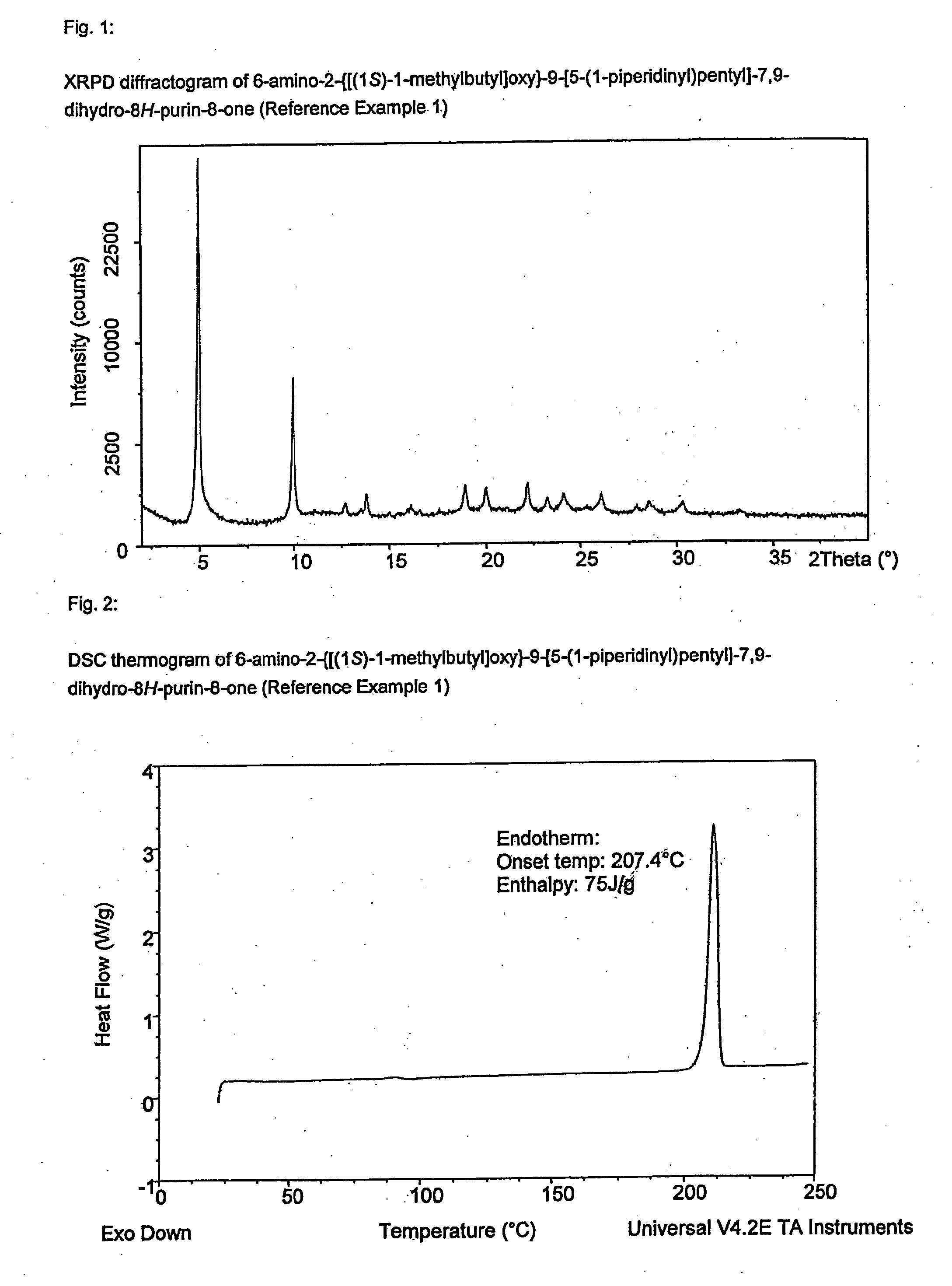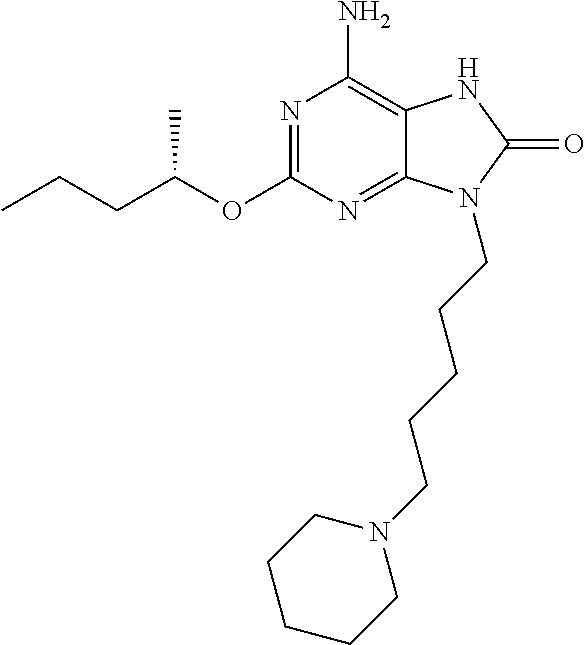6-amino-2--9-[5-(1-piperidinyl)-7,9-dihydro-8h-purin-8-one maleate
a technology of 6amino-2--9-[5-(1-piperidinyl)-7,9-dihydro-8h-purin-8-one maleate, applied in the direction of antibody medical ingredients, drug compositions, immunological disorders, etc., can solve the problems of disease modification, failure to show sustained viral response, and inability to control viral load
- Summary
- Abstract
- Description
- Claims
- Application Information
AI Technical Summary
Benefits of technology
Problems solved by technology
Method used
Image
Examples
reference example 1
)
6-Amino-2-{[(1S)-1-methylbutyl]oxy}-9-[5-(1-piperidinyl)pentyl]-7,9-dihydro-8H-purin-8-one
[0226]9-(5-Chloropentyl)-2-{[(1S)-1-methylbutyl]oxy}-8-(methyloxy)-9H-purin-6-amine, sulfuric acid salt (254 g, 1.0 eq) was dissolved in DMSO (1.27 L) and piperidine (280 mL, 5 eq). The reaction mixture was heated to 70±3° C. for 15.5 h. The reaction mixture was cooled to 20±3° C. Toluene (2.5 L) was added, followed by water (1.25 L). After stirring for 10 minutes, the phases were separated and the upper toluene phase was washed with water (0.5 L). A solution of hydrochloric acid (2.24 mol) in water (1.5 L) was added. The mixture was stirred for 10 minutes and then allowed to separate with the lower (aqueous) phase retained. The aqueous solution was heated to 50±3° C. for 17 h and then cooled to 20±3° C. Aqueous sodium hydroxide (2M, ca. 840 mL) was added dropwise until the solution had a pH of 10-11. The resulting suspension was cooled to 10±3° C., aged for a further 30 min. then filtered. Th...
example 2
6-Amino-2-{[(1S)-1-methylbutyl]oxy}-9-[5-(1-piperidinyl)pentyl]-7,9-dihydro-8H-purin-8-one, Maleate Salt
[0236]
[0237]Preparation 1
[0238]6-amino-2-{[(1S)-1-methylbutyl]oxy}-9-[5-(1-piperidinyl)pentyl]-7,9-dihydro-8H-purin-8-one (for example, as prepared for Reference Example 1) (0.384 g, 0.98 mmol) was dissolved in isopropyl alcohol (4.6 mL, 12 vols) and heated to 40° C. Maleic acid (0.114 g, 0.98 mmol) was added. A clear solution was obtained. During cooling to room temperature, precipitation occurred. The slurry was filtered, washing with isopropyl alcohol (5 mL) and dried under reduced pressure at 40° C. to constant weight. 6-amino-2-{[(1S)-1-methylbutyl]oxy}-9-[5-(1-piperidinyl)pentyl]-7,9-dihydro-8H-purin-8-one, maleate salt (0.305 g, 61% th) was obtained as a white solid.
[0239]1H NMR confirms a 1:1 ratio of maleic acid: 6-amino-2-{[(1S)-1-methylbutyl]oxy}-9-[5-(1-piperidinyl)pentyl]-7,9-dihydro-8H-purin-8-one. 1H NMR (400 MHz, DMSO-d6) δ ppm, 9.85 (1H, s, (CH2)3NHCO), 8.85 (1H,...
PUM
| Property | Measurement | Unit |
|---|---|---|
| wavelength | aaaaa | aaaaa |
| packing diameter | aaaaa | aaaaa |
| packing diameter | aaaaa | aaaaa |
Abstract
Description
Claims
Application Information
 Login to View More
Login to View More - R&D
- Intellectual Property
- Life Sciences
- Materials
- Tech Scout
- Unparalleled Data Quality
- Higher Quality Content
- 60% Fewer Hallucinations
Browse by: Latest US Patents, China's latest patents, Technical Efficacy Thesaurus, Application Domain, Technology Topic, Popular Technical Reports.
© 2025 PatSnap. All rights reserved.Legal|Privacy policy|Modern Slavery Act Transparency Statement|Sitemap|About US| Contact US: help@patsnap.com



